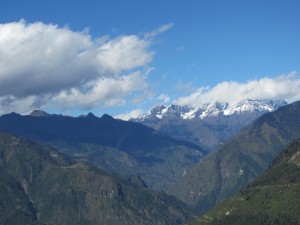 Poised on the banks of the Brahamputra River, this rapidly growing city provides a link to seven other northeastern states. Its hills hold a 10th-century temple dedicated to the goddess Kamakhya and an ancient seat of astronomy known as Navagraha, the temple of the nine planets; the small Umananda temple, dedicated to Lord Shiva, is on an island in the river. The area around the city contains wildlife sanctuaries, archeological ruins and a silk-weaving center.
Poised on the banks of the Brahamputra River, this rapidly growing city provides a link to seven other northeastern states. Its hills hold a 10th-century temple dedicated to the goddess Kamakhya and an ancient seat of astronomy known as Navagraha, the temple of the nine planets; the small Umananda temple, dedicated to Lord Shiva, is on an island in the river. The area around the city contains wildlife sanctuaries, archeological ruins and a silk-weaving center.
Formerly known as Pragjyotishpur, Guwahati, also called as Gauhati, is considered as the gateway to the north-east region of the country. Located on the bank of the Brahmaputra River, Guwahati is also the largest city of Assam. The largest metropolis in the north-east region of the country, this city is also the second largest metropolitan area in entire eastern India.
The present capital of the State of Assam is Dispur, which is located within the city and is also the seat of the Government of Assam. With world-class institutions like the Indian Institute of Technology, Guwahati is also a major commercial and educational centre of North-East India. A hub for cultural activities and sports in the north-eastern region, the city is also the centre for political and administrative activities of Assam. Moreover, the destination is also an important transportation hub in the north-east region and is well-connected to the rest of the country.Guwahati attracts tourists due to its rich cultural mix and tribal traditions along with several colourful festivals. One of the most popular fairs that is held in this city is the Ambubachi Mela. This fair is organised every year during the monsoon season, which is attended by large number of devotees.
Some of the major festivals celebrated in the city are Bihu, which is the National Festival of the Assamese and the Bahag Bihu during April. The Kati or Kangali Bihu and the Magh or Bhogali Bihu are some of the other festivals of Guwahati. The best time to visit Guwahati is from the months of October to April.
Guwahati is among the first 100 fastest growing city of the world and is 5th fastest growing among Indian cities. Today, the city straddles between the LGB International Airport in the west to Narengi in the east for almost 45 kilometres and between the southern bank of the Brahmaputra river and the foothills of the Shillong plateau for around 15 kilometres. Moreover, the city is also getting gradually expanded to the northern bank of Brahmaputra. Guwahati with population just 0.2 million in 1971 is a million plus city today. Guwahati Municipal Corporation (GMC), the city’s local government covers an area of 216 km², while Guwahati Metropolitan Development Authority (GMDA), the planning and development authority covers an area of 340 km².
It is a major commercial and educational center of eastern India and is home to world-class institutions such as the Indian Institute of Technology Guwahati. The city is also a major center for cultural activities and sports in the North Eastern Region and for the administrative and political activities in Assam. The city is also an important hub for transportation in the North East Region.
Traditionally, Guwahati has been an important administrative and trading center and a river port. The name Guwahati is derived from two Assamese words: ‘guwa’ (areca nut) and ‘haat’ (market place). The name used to be spelled as Gowhatty (pre-colonial and colonial), standardized to Gauhati (colonial-British), which was then changed to the present form in the late 1980s to conform to the local pronunciation.
History of Guwahati
Traditionally, Guwahati has been an important administrative and trading center and a river port. The name Guwahati is derived from two Assamese words: ‘guwa’ (areca nut) and ‘haat’ (market place). The name used to be spelled as Gowhatty (pre-colonial and colonial), standardized to Gauhati (colonial-British), which was then changed to the present form in the late 1980s to conform to the local pronunciati .There is almost a magic that hovers over the city.
Epigraphic sources place capitals of many ancient kingdoms in Guwahati. It was the capital of the mythological kings Naraka and Bhagadatta (reference in the Mahabharata). The ancient sakti temple of Kamakhya in the Nilachal hill (also important seat of tantric and Vajrayana Buddhism), Navagraha, the nine planets temple (ancient and a unique temple for astrology) located in Chitrachal Hill and archaeological remains in Basista and many other locations support the mythological characters and the city’s ancient past.
The history of the city dates back to the epic times. Guwahati has its first mention in the great epic Mahabharata as the capital of the demon king Narakasura of Pragjyotishpur. Due to this reason, the city came to be known as Pragjyotishpur, which means Light of the East. It is also believed that the city was the ancient land of Kamarupa. In this ancient land, the Hindu god of beauty, fertility and source of life was reborn.
The destination, till the invasions of Ahoms, had been the nerve-centre of all cultural activities. In addition, the city has also been a battleground and witnessed plenty of intense struggles between the Mughals and Ahoms. The Mughals tried to invade the state around 17 times, however every time they were defeated by the Ahoms. During the time of battle, the army of Ahoms was led by the great Ahom General, Bir Lachit Borphukan.
Sightseeing
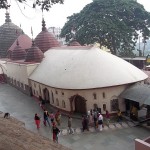 Kamakhya Temple
Kamakhya Temple
Guwahati tourism is particularly famous for its Kamakhya temple located atop the Nilachal hill, at a distance of 10 km from the railway station. Known to be the most revered among the tantrik shrines of Shakti worship in the world, Kamakhya, was built-in the 10th century by the Koch king, Naranarayan. Animal sacrifice is a common practice here to appease the Goddess. The former temple was destroyed by Kala Pahar, which was later reconstructed in 1565 by Chilarai, who was the reigning king of the Koch dynasty. This temple is dedicated to different forms of Mother Shakti, namely Sundari, Tripura, Tara, Bhuvaneshvari, Bagalamukhi and Chinnamasta. Comprising three major chambers, the present structure is considered as a sacred complex.
Bhubaneshwari Temple
Above Kamakhya is another small temple, Bhubaneshwari, from where one can have a bird’s-eye view of the Guwahati. The Bhubaneswari temple, a white shrine, is perched atop a hill adjacent to the city. Dedicated to Goddess Bhubaneshwari, the temple is visited by large number of tourists from across the country every year. From the temple, views of sunset on the Brahamputra River are available.
The temple is situated high upon a hill which takes a 20 minutes’ walk from the bus stand.
Shiva Temple
The Shiva temple of Umananda, reached by motor boats and public ferries from Umananda Ghat, stands on an island in the middle of the Brahmaputra.
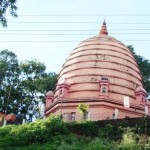 Navagraha Temple
Navagraha Temple
Atop a hill in east Guwahati is the Navagraha temple – the “temple of nine planets,” – an ancient seat of astrology and astronomy. Housed in a red beehive-shaped dome, the central lingam is encircled by further nine representing the planets (graha) – Sun (Surya, Ravi), Moon (Chandra, Soma), Mercury (Buddh), Venus (Sukra), Mars (Mangal), Jupiter (Brhaspati) and Saturn (Sani). Two more were added, Rahu and Ketu, the dragon’s head and the dragon’s tail, or the ascending and descending nodes of the moon.
Vashistha Ashram
At a distance of 12 km from the railway station is the Vashistha Ashram (the abode of sage Vashistha), an interesting old shrine, with plenty of greenness and three beautiful streams, Lalita, Kanta and Sandhya. Several other temples like the Ugratara temple, famous for its golden idol and buffalo sacrifices, are also spread across the city.
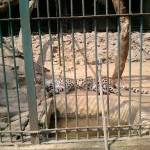 Guwahati Zoo
Guwahati Zoo
One must visit the Guwahati Zoo during Guwahati tourism, which is the largest natural zoo of the country. Guwahati Zoo is one of the highlights of the city. Located on Zoo Road, it is the largest zoo in the North East, spread over a huge area of almost 50 hectares and contains the botanical garden and a part of the Hengerabari Reserve Forest. Several exotic animals are displayed here, among them are endangered species like the Great Indian One-Horned Rhinoceros, Golden Langur, Hoolock Gibbon, Asian Elephant, Tiger, Brow-antlered Deer, Binturong, Slow loris, Great Pied Hornbill, Ghorial, Burmese rock python, etc.
It is very popular with the children of the city as well as with adults as several endangered species of animals have been successfully bred here. Carnivorous plants like the pitcher plant (Nepenthes Khasiana) are also on display here.
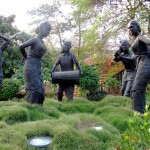 Nehru Park
Nehru Park
A beautiful park made in the mid of the city and maintained by GMDA is very excitting for children. Situated in the Panbazar Area, near a Church and just opposite to Cotton Collge, makes this place even more desirable and cool. The park is well maintained, huge land scape area, lots of plays, rides for children, many statue of ancient heros of Assam, and statue representing cultural of Assam, Exciting Spped Car Lane for kids, clean food court, many beautiful fountains, and one bhul bhulaia made of plants.
How To Reach Guwahati
By Air
Lokapriya Gopinath Bordoloi International Airport of Guwahati is well-connected by air with New Delhi, Kolkata, Mumbai and Chennai. Indian Air Lines, Sahara And Jet Airways operate regular flights to Guwahati Assam. The other towns to which these airways operate flights are Jorhat, Dibrugarh, Tezpur, North Lakhimpur and Silchar. Air India operates direct flight between Guwahati and Bangkok on Mondays and Thursdays.
ByRail
The busy and overcrowded Paltan Bazar railway station is the nearest railhead for many trains from every part of India. There are direct train services from New Delhi and Kolkata with connectivity to Mumbai, Chennai, Bangalore, Kochi and Thiruvananthapuram etc.
By Road Transport
All India tourist permit vehicles are available for the local transportations and also for the inter city transportations too. Guwahati is connected by regular bus services with Shillong, Silchar, Dibrugarh, Jorhat, Tezpur, Siliguri, Sibsagar, Dimapur, Kohima, Imphal, Aizawal, Itanagar, Barpetta Road and Cooch Bihar.
Facts about Guwahati
State Assam
Population 584342
Area 216.79 sqkms
Languages Asamese,Hindi,English
STD code 0361
Altitude 55m
Temperature Maximum 38 Minimum 6 degree
Latitude 26.1838° N
Longitude 91.7633° E
Photo Gallery Of Guwahati
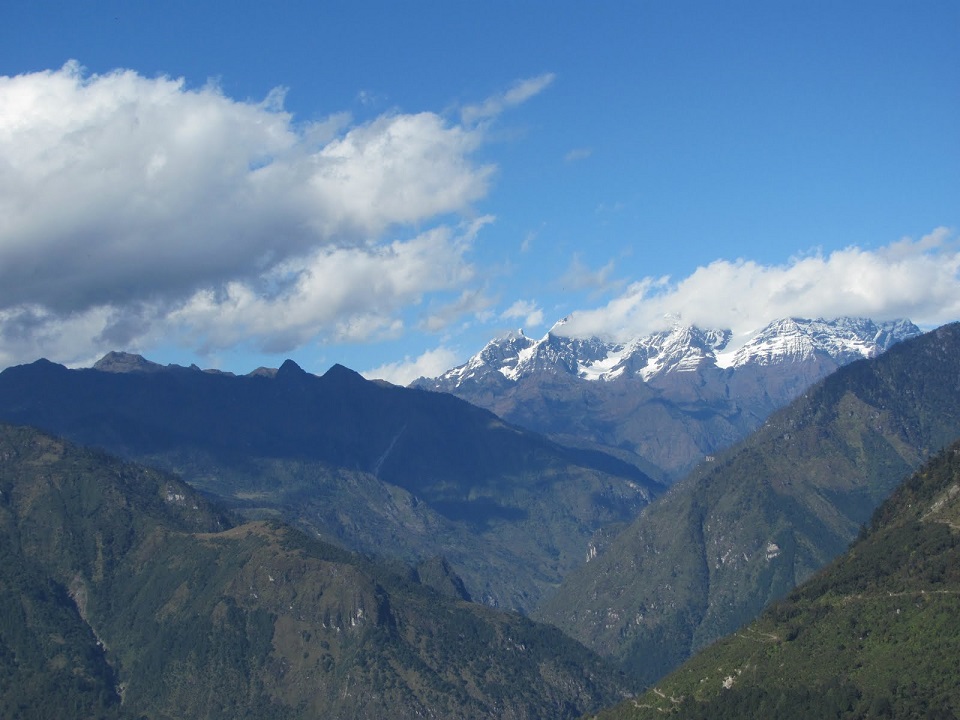
Submit your review | |












